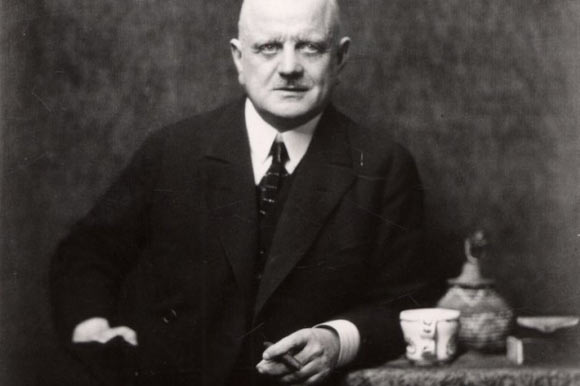
Jean Sibelius was a Finnish Composer who composed in the Late Romantic era. He is known for his role in the formation of the Finnish national identity.
Jean Sibelius was born in Hameenlinna, Grand Duchy of Finland on December 8, 1865. Early records indicate that Sibelius started getting serious about his musical education around the age of fourteen. At the age of twenty, he decided to embark upon a career in music. He enrolled in the Helsinki Music Academy in 1885 and he continued his studies there till 1889; interestingly, the school has now been renamed to the Sibelius Academy in his honor. Sibelius then studied composition with Martin Wegelius, Albert Becker and Karl Goldmark. He initially wanted to be a violin virtuoso, but he had to abandon his dreams upon realizing that he started his violin training much too late in his career.
Between 1889 and 1891, Sibelius studied and composed in Berlin and Vienna. He also spent a year in Italy between 1900 and 1901.
Sibelius is most known for his seven symphonies. They were known for their adventurous use of chord patterns and tritones. Sibelius’s symphonies also implicated complicated melodic structures. The uses of the Dorian Mode and Polyphony in his works are generally cited.
One of Sibelius’s most famous works was his symphonic composition titled “Finlandia”, which reflected on the national struggle of the people of Finland. Sibelius also wrote on some aspects of Finnish Mythology, his “Swan of Tuonela”, written in 1893, was based on the Kalevala Epic and it gathered plenty of attention. Sibelius was also popular for his “Karelia Suite”, which he wrote in affection for the Karelia Province. “Valse Triste” is also regarded as one of Sibelius’s best works, which was written for his brother-in-law, Arvid Jarnefelt.
Even though Sibelius could not become a violin virtuoso, he wrote a great deal of magnificent works for the instrument. His Violin Concerto in D Minor of 1904 was of primary importance. The three movement piece is widely considered to be one of the most technical and formidable concerto works for the violin. The third movement in particular, has been described as a “polonaise for polar bears”.
Sibelius also left a mark on Freemasonry; he composed the Finnish Ritualistic Music in 1927. In 1948, he presented a newer, revised version. Sibelius’s other orchestral works included the “En Saga” of 1902, his “Rakstava” of 1911, his “Lemminkainen Suite” of 1893, the “Varsang” of 1894, and his suite for incidental music titled “Kung Kristian II”. Other highly famous works included “Barden (1913)”, “Luonnotar (1913)”, “Aallottaret (1915)”, “The Tempest (1925)” and the “Jordens Sang (1919)”.
Much of Sibelius’s work received bad reviews from critics, who termed the composer’s works ‘weak’ and ‘weird’. However, Sibelius’s works stood the test of time and they were often the popular choice in both concert halls and orchestras. Sibelius himself once said about his critics, “Pay no attention to what critics say. No Statue has ever been put up to a critic”. Interestingly, the Sibelius Monument was erected in 1967, ten years after his death. Sibelius had multiple health problems during his life. In 1907, he underwent surgical treatment for throat cancer. Jean Sibelius died in Ainola, Finland, on September 20, 1957 due to a brain hemorrhage.